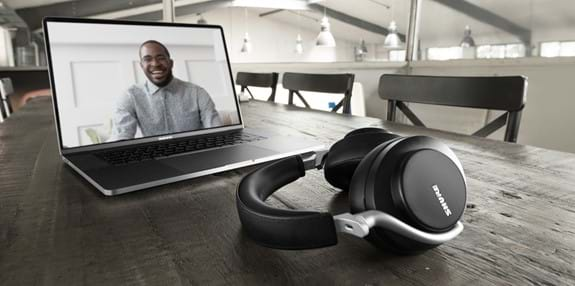Audio frustrations in Higher Education (and solutions from Shure)

For the majority of HE facilities, there was an immediate need to face the challenges head-on and quickly plan, design and deploy new systems capable of delivering the learning experience. Students were also faced with the prospect of using their own devices on a daily basis, and while the BYOD trend continues to rise, many had to consider investing in better devices to transition to remote learning.
Higher Education has been through a dramatic change in a relatively short period of time – just over 12 months - with the move to virtual teaching and remote working due to the COVID-19 pandemic.
Many questions had to be asked. Do we have the technology needed to deal with this sea change in teaching and learning? Is the technology a viable long solution? Can we ensure the same level of teaching standards for both faculty and students?
For the majority of HE facilities, there was an immediate need to face the challenges head-on and quickly plan, design and deploy new systems capable of delivering the learning experience. Students were also faced with the prospect of using their own devices on a daily basis, and while the BYOD trend continues to rise, many had to consider investing in better devices to transition to remote learning.
The requirement from faculty was a need for powerful new AV systems – more superior than a ‘traditional’ system that would have been deployed only a few years ago – offering flexibility, reliability and an intuitive interface, along with superior audio quality.
Research published in the Science Communication journal by USC and the Australian National University shows that not only does audio quality influence what people hear, it has a direct impact on engagement and productivity levels, whilst boosting the credibility of the presenter. Voice lift systems, once the reserve of corporate boardrooms, offer the ability to amplify the voice in a natural, effective manner from students sat socially distanced from each other in a large room, and engage with students with intelligible, crystal clear audio - revolutionizing the way lessons are now communicated, and creating a much more balanced, comfortable learning experience for both student and academic.
From our customers’ perspective and the feedback we’ve received at Shure, HE is looking at the long-term solution over a short-term ‘fix,’ with many investing in systems capable of meeting the new demands needed in the modern classroom environment.
The need is two-fold: to continue to deliver a learning standard acceptable to both the individual in the physical classroom experience and the student collaborating remotely, and also to attract prospective students to the HE institution in the future.
Scalable solutions have been a key request with a focus on maintaining and exceeding teaching standards. Prospective students are now not only judging HE institutions on the courses that they offer, but how those courses are delivered by the invested technology.
“The trend we’re currently experiencing is for a hybrid model where collaborative and active learning can take place, along with flexible, user friendly systems that can meet daily challenges quickly and efficiently,” explains Chris Morley, Market Development Manager, Shure.
“The Shure Audio ecosystem includes the complete audio signal chain, from microphone to DSP to loudspeaker, which is perfect for all types of application within the HE sector. It provides both faculty and students with the tools needed for a productive learning environment and the best possible audio experience for any student progressing on their learning journey.”
Statistics obtained via https://www.uctoday.com/endpoints/academics-reveal-that-high-quality-audio-makes-people-like-you-more/
